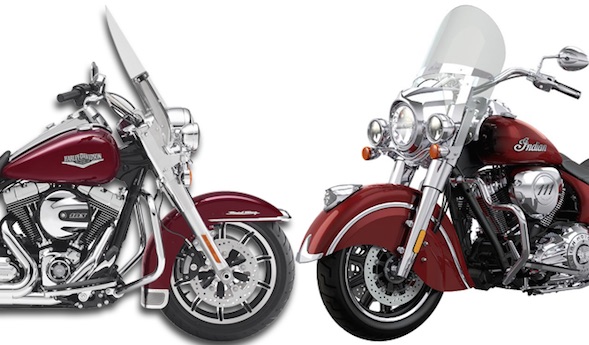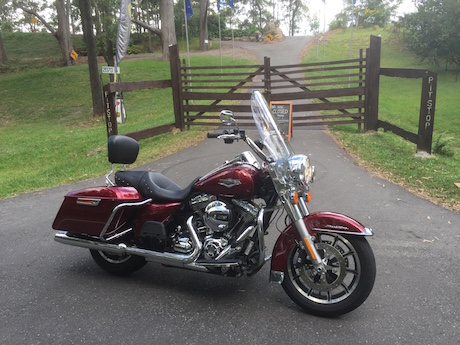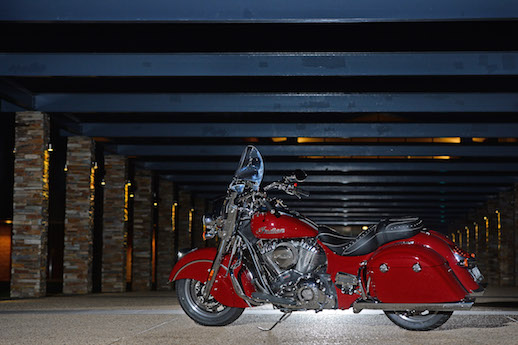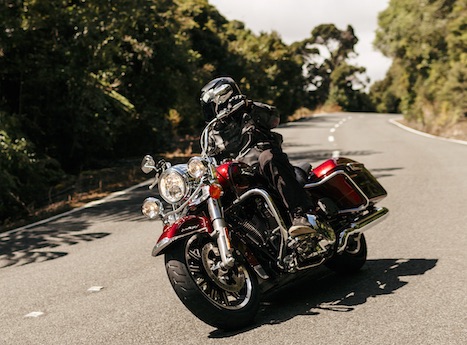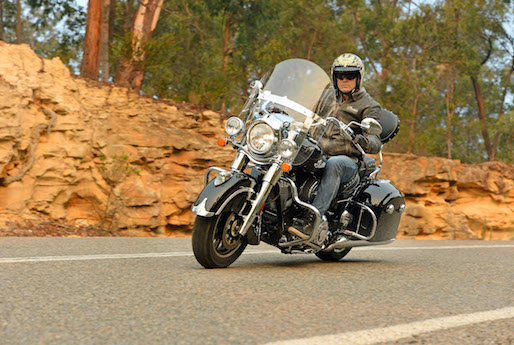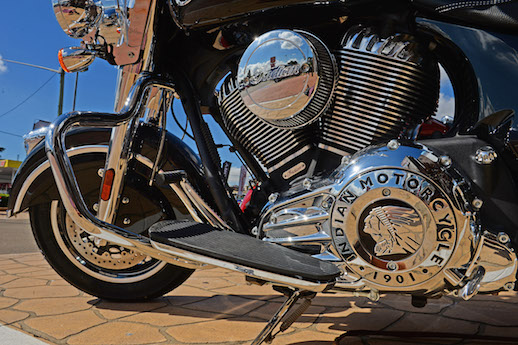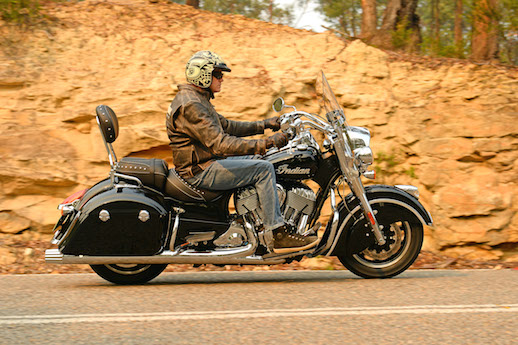The new Indian Springfield takes direct aim at the Harley-Davidson Road King, says Indian Motorcycle Country Manager Peter Harvey.
Both are hard bagger American tourers that convert into cruisers with quick-release windscreens and panniers. (The Springfield goes a little further with a dual seat you can convert to solo.)
So a comparison between the two is obvious. It’s also quite convenient and pertinent as Harley recently delivered a Road King to Motorbike Writer for long-term evaluation and we have just returned from the Springfield media launch in Sydney.
PRICE/VALUE
The Harley-Davidson is cheaper at $32,495 ride away while the Springfield costs $1500 more (both at ride-away prices). For that you get more chrome, leather/vinyl seats, internal handlebar wiring, tyre pressure monitors, a more comprehensive information screen, adjustable rear floorboards and remote-lockable panniers.
Both feature cruise control, ABS, dual auxiliary lights and front and rear highway bars.
The Harley also comes with rear-cylinder deactivation for cooler temperatures while waiting at the lights.
STYLE/FINISH
Both have lusciously thick paint, deep chrome, quality tank badges, neat controls and tidy welds.
However, the Indian is definitely the better finished with beautiful chrome bolts everywhere and tidier wiring.
Even the levers to take off the windscreen are classy chrome units, while the Harley’s are pieces of coat-hanger wire.
If you like the traditional full-valanced fenders and rounded lines, the Indian is right up your alley. It will attract a lot of attention wherever it goes and you will always have admirers wanting to talk about the bike.
However, the stately, almost subdued, styling of the Road King may appeal to those who don’t want to stand out too much.
HANDLING /RIDE
My wife prefers the plush ride of the Indian which rolls over the bumps and irons out a lot of the road imperfections, while the Harley just crashes through them.
However, the Harley is a sharper tool for the rider. It seems to have more precision and control in the steering and more cohesion between the front and rear suspension.
The Springfield has a light turn-in but feels a little flighty and the front and rear don’t “talk” to each other.
While static clearance may be a little better on the Indian, corners with bumps and undulations will cause it to lose clearance and scrape the footboards. The dynamic lean angle of the Harley is more predictable and dependable.
DRIVETRAIN
On paper, the 111-cube Indian Thunder Stroke engine with 161.6Nm of torque at 3000 revs seems to blow away the 103-cube Harley High Output Twin Cam with 138Nm at 3500revs.
But in the real world there are differences in the power delivery and engine vibe.
The Indian feels more robust with a rumble and grain that is retained right throughout the rev range. It sprints off the line a little quicker and has a linear power delivery.
Harley’s 103 is an engine full of character and delight. It feels rougher at idle, but loves to rev more, smooths out and lights up at peak revs, yet lopes along the highway with a beautifully relaxed gait.
This also has a lot to do with the transmission as the Harley is geared a little higher.
For highway overtaking duties, you have to drop back to fifth on the Road King, but just roll the throttle on the Springfield. However, I often felt the Springfield needed an extra gear when cruising.
Both have heavy-duty transmissions that clunk into gear, but I find neutral a little easier to find on the Springfield.
According to our fuel economy test, not the stated tech specs, the Indian has a slightly reduced range with a 20.8-litre fuel tank and 6.5L/100km economy compared with the Road King’s 22.7L tank and 5.9L/100km.
COMFORT/CONVENIENCE
Figures and stats also don’t always tell the story when it comes to comfort, either.
The Indian seat is 660mm, while the Harley’s is 715mm, yet you somehow feel more like you are sitting “in” the Road King and “on” the Springfield. Maybe it’s because the bars and tank are higher on the Harley.
Reach is a little closer with the Springfield’s buckhorn handlebars versus the Harley mini-apes. They also have a more comfortable 45-degree bend wheres the Harley’s are straighter.
Indian boasts its seats are made of leather, but the Springfield has a vinyl centrepiece to add a little comfort as leather can be stiff. But the Harley vinyl seat feels more plush for long hauls.
The Springfield has longer footboards so you can move your feet around a bit, but it doesn’t come with the handy heel shifter as standard on the Road King.
Screen buffeting is fairly similar with both touring screens in place. The Indian screen reflects the chrome tank instruments right in your field of vision.
Both are hot, air-cooled bikes, but I found the Springfield pours more heat out of the right-hand side than the HD. While the Harley also has the rear-cylinder deactivation system, I’ve never found it to be very effective.
Indian pillions will love the three-position adjustable rear floorboards, while both feature wide and thick pillion seats.
While I can’t find figures for luggage capacity, the Springfield bags seem to be wider although both have wide top apertures for easy access. The remote locking on the Indian is a very handy addition.
I also like the addition of ambient temperature and fuel economy in the Springfield’s screen display.
VERDICT
Later this year we plan to buy a big cruiser-based tourer. The Road King has always been my pick, while Mrs MBW likes the Indian Vintage and would probably like the Springfield for its comfortable ride.
Now our choice has just been made that little bit more difficult.
It’s a shame we can’t take bits of both bikes and put them together for the perfect two-up touring cruiser!


